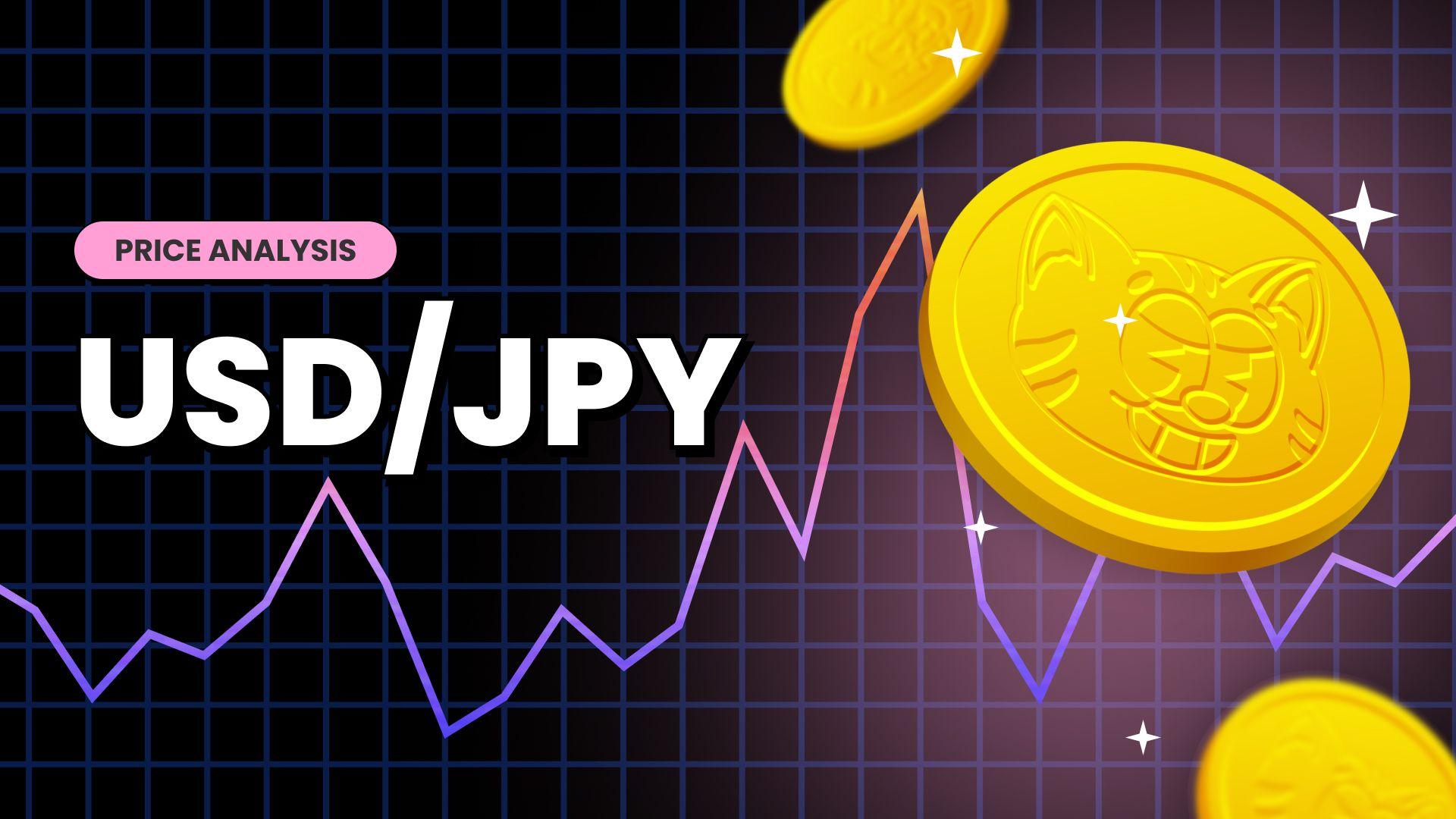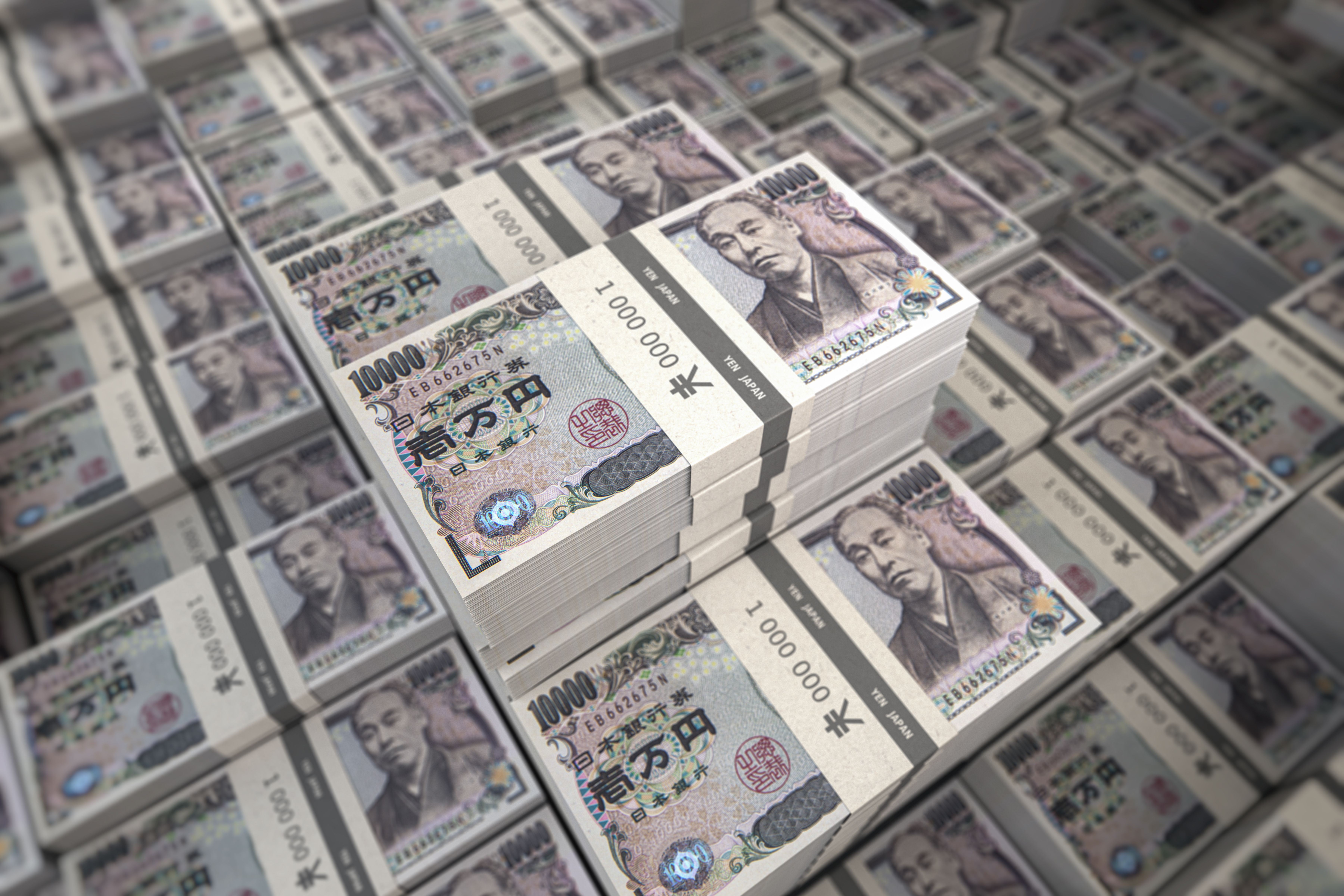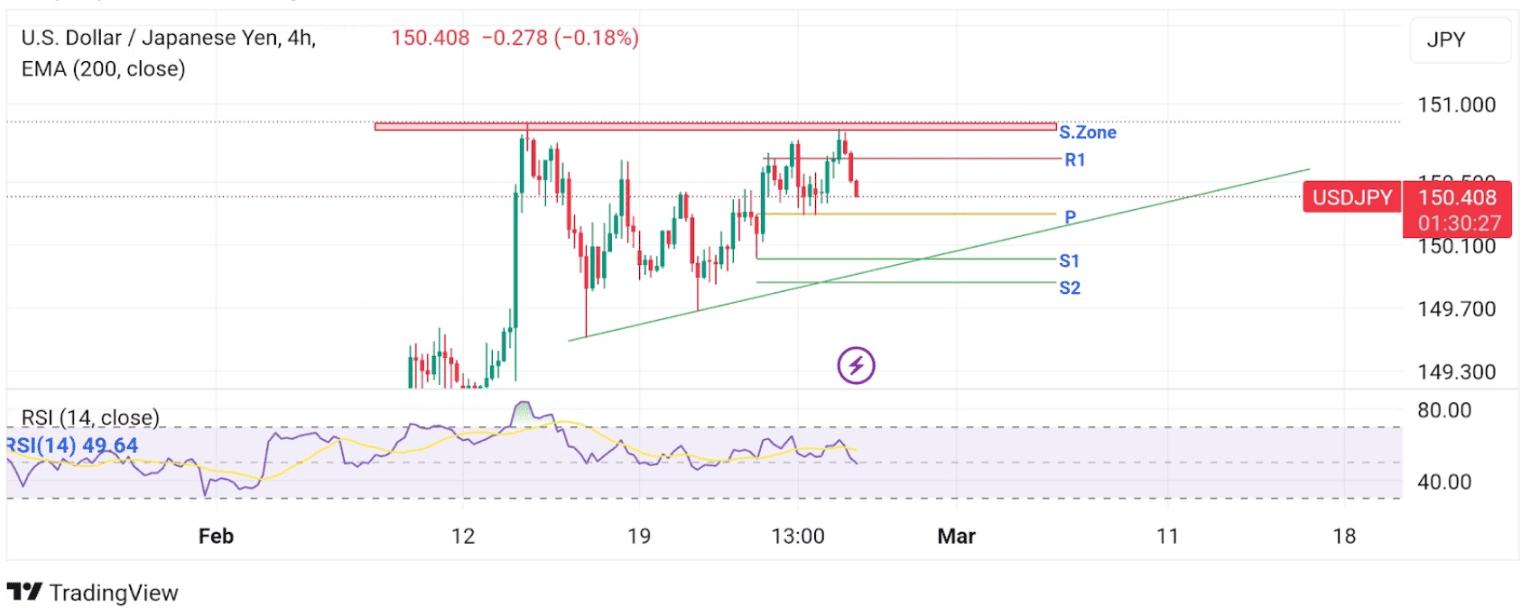USD/JPY Eases Further From A Three-Months High On Sustained U.S. Dollar Selling






Key Takeaways:
- A combination of factors drags spot prices further away from a three-month high
- Retreating U.S. Treasury bond yields, combined with a fresh batch of disappointing U.S. macro data, weigh on the back and help exert downward pressure on the USD/JPY cross
- Speculations that rising wages could force the Bank of Japan (BoJ) to raise rates also extended support to the Japanese yen (JPY)
- The downside for the USD/JPY remains cushioned in the meantime
USD/JPY Pair extended its corrective slide from the vicinity of the 150.844 level, or almost three months high. They witnessed selling for the third consecutive session on Tuesday during the second half of the Asian session, dragging spot prices further toward a critical support level around the 150.290 region.
The catalyst for Tuesday's Asian session push lower could be attributed to the ongoing retreat in U.S. Treasury bond yields, which triggered some short selling around the U.S. dollar at high levels and, in turn, helped cap the upside for the USD/JPY cross.
Uncertainty about the Fed's timing of the interest rate cuts sees the U.S. Treasury bond yields fall on Tuesday, which in turn weighs on the greenback and helps exert downward pressure on the shared currency. Apart from this, the generally positive sentiment surrounding the U.S. equity markets further weighs on the buck and helps extend losses around the USD/JPY cross.

Moreover, a fresh batch of disappointing U.S. macro data further acts as a headwind to the buck and limits gains around the USD/JPY pair. A U.S. Census Bureau report released Monday showed sales of new single-family houses in the United States rose by 1.5% from the previous month to a seasonally adjusted annualized rate of 661,000 in January 2024, missing market expectations 680,000.
Additionally, speculations that rising wages could force the Bank of Japan (BoJ) to raise rates extended support to the Japanese Yen (JPY). This comes after average cash earnings in Japan increased by 1% year-on-year in December 2023, accelerating from a 0.2% gain in November but missing expectations for a 1.3% growth.
However, a Ministry of Internal Affairs and Communications report released earlier today complicates this narrative after it showed the core inflation rate in Japan fell to a 22-month low of 2.0% from 2.3% in December, above market consensus of 1.8%, but within the Bank of Japan's 2% target after surpassing that level for 21 months. The data reduces the pressure on the Bank of Japan to raise interest rates following months of speculation that rising wages and price increases would force its hand. The latest figures also follow recent data showing Japan's economy fell into a technical recession in the fourth quarter, losing its spot as the world's third-largest economy to Germany.

Despite the combination of negative factors, the downside seems limited as the U.S. dollar continues to draw support from firming expectations that the Fed will leave rates unchanged during the March and May meetings and start cutting rates during the third quarter of 2024.
The bets were reaffirmed after the latest Fed meeting minutes were released last week on Wednesday, which showed the Fed is concerned about cutting rates too soon, signaling early rate cuts were entirely off the table.
The January FOMC Meeting minutes came days after a U.S. Bureau of Labor Statistics (BLS) report showed consumer and wholesale inflation rose in the U.S. in January, which, when combined with robust U.S. job data and the recent hawkish Fed official's comments, thoroughly debunks the idea of early aggressive rate cuts and supports the view that rates are likely to stay higher for longer.
Going forward, traders look forward to the U.S. docket featuring the release of the Core Durable Goods Order (MoM) (Jan) and the CB Consumer Confidence (Feb) data report. The main focus, however, remains on releasing the U.S Core PCE Price Index, popularly known as the Fed's preferred inflation gauge, on Thursday.
Technical Outlook: Four-Hour USD/JPY Price Chart

From a technical standpoint, the USD/JPY descent and subsequent extension of the modest bounce from the supply zone ranging from 150.883 - 150.830 levels set the path straight for further depreciating moves around the shared currency. A further increase in selling pressure would drag spot prices toward the 150.290 pivot level (P). A convincing move below this level would pave the way for an accelerated drop toward the 150.012 level (S1), which sits directly above the 150.000 round mark. Sustained weakness below these levels, followed by a bearish price breakout below an upward ascending trendline support extending from the mid-February 2024 swing lower-lows, would prompt aggressive technical selling and make the USD/JPY vulnerable. Spot prices would then retest the 149.860 level (S2). Failure to defend this level would pave the way for a further decline towards the 149.571 - 149.511 demand zone.
On the flip side, any meaningful pullback now faces initial resistance at the 150.650 level (R1) ahead of the 150.883-150.830 supply zone.